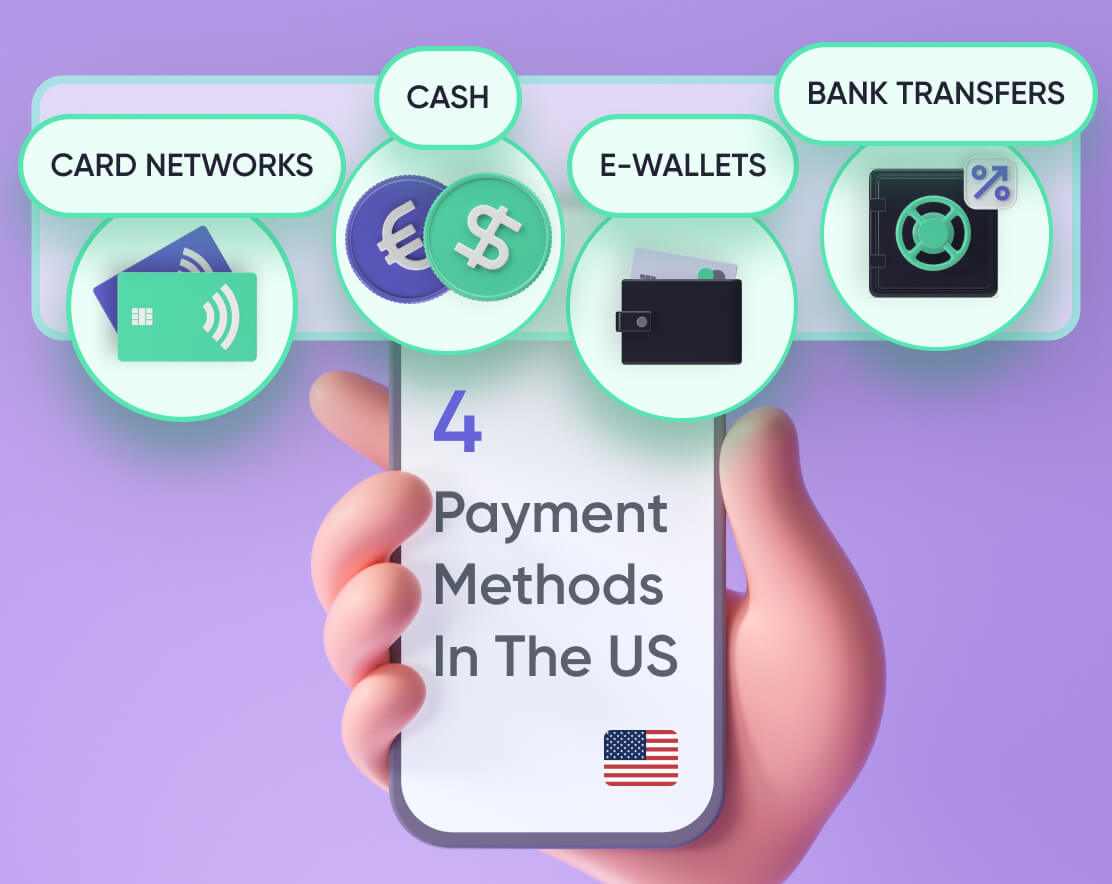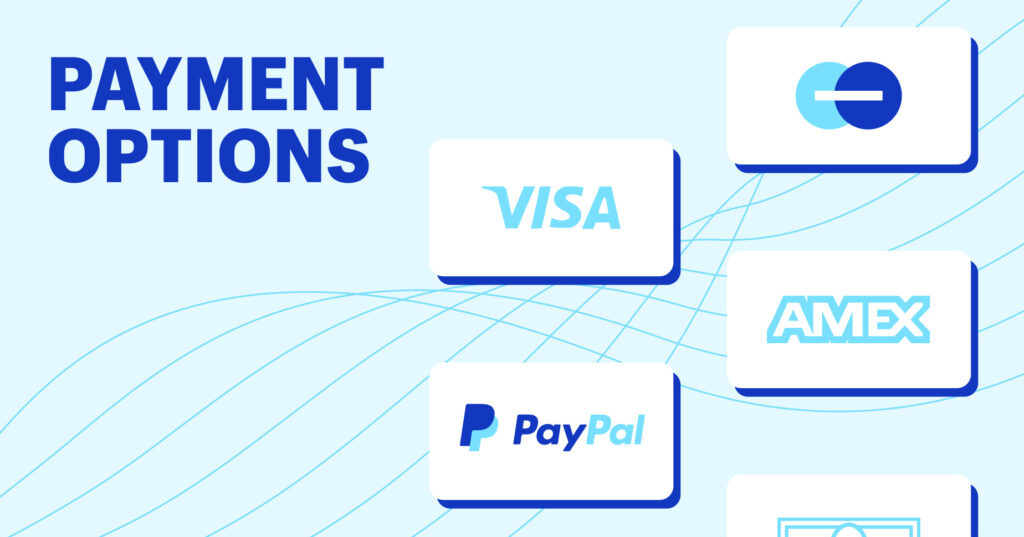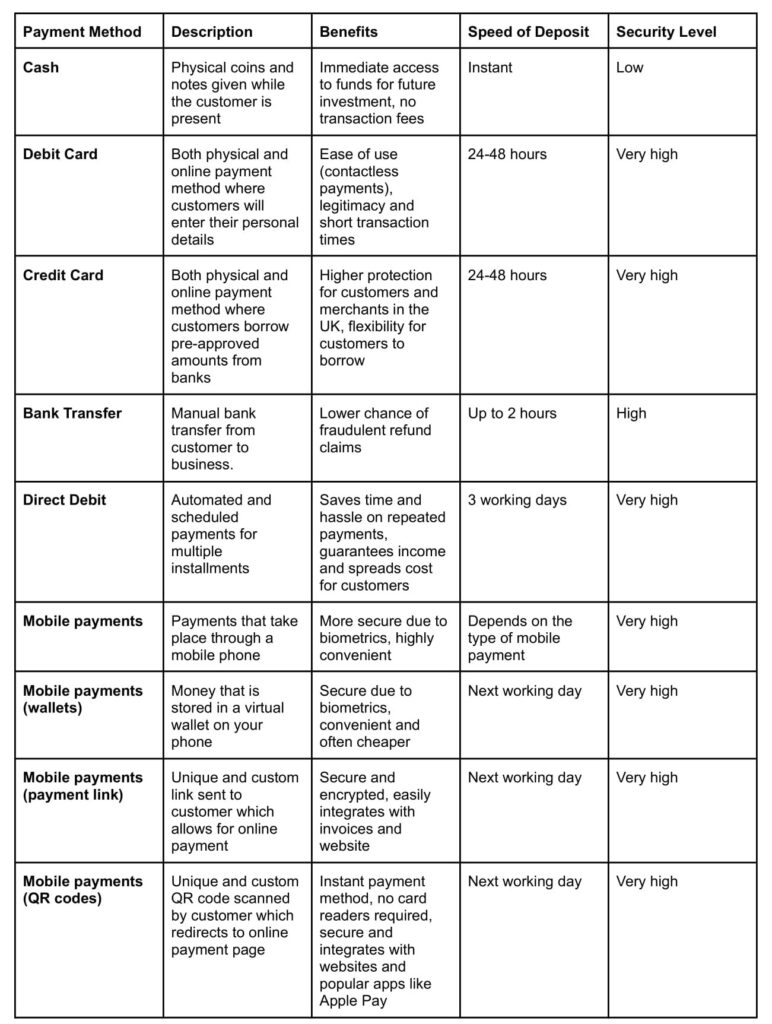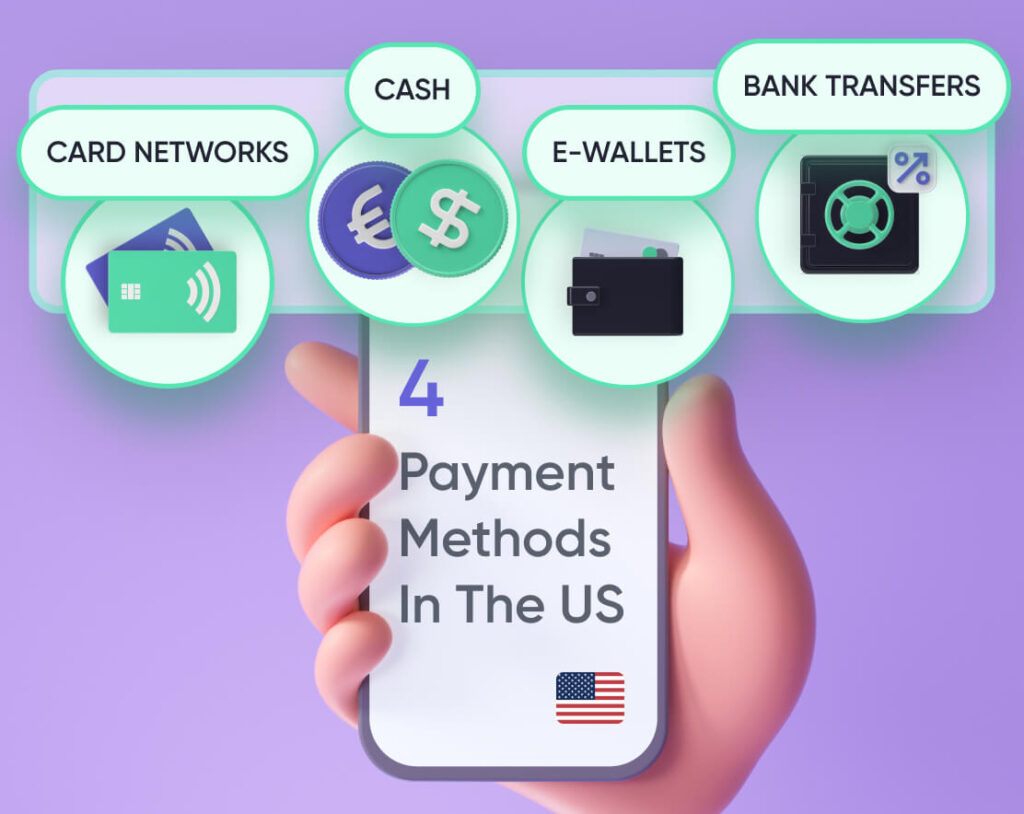
In this article, we will take a closer look at the diverse range of payment options available for businesses. From traditional cash payments to modern digital wallets and contactless transactions, we will explore the various methods that businesses can utilize to accept payments. Join us as we delve into the world of payment acceptance and discover the options that can help businesses thrive in this ever-evolving landscape.

Cash Payments
Advantages of Cash Payments
Cash payments offer several advantages for both businesses and customers. Firstly, cash is widely accepted and can be used for transactions in almost any location. It provides a level of convenience as it eliminates the need for additional steps such as verifying online payments or waiting for check clearance. Moreover, paying in cash allows for transactions to be completed quickly, especially for smaller amounts.
Another advantage of cash payments is the sense of security it provides. Unlike digital payments, there is no risk of fraudulent activity or hacking when paying with physical currency. This makes cash a preferred option for individuals concerned about identity theft or online security breaches.
Disadvantages of Cash Payments
While there are advantages to using cash, there are also some disadvantages to consider. One drawback is the potential for loss or theft. If cash is lost or stolen, it cannot be easily replaced, unlike credit or debit cards where the funds can be recovered. Additionally, cash transactions can be more challenging to track and document for accounting and tax purposes. This can create difficulties when it comes to managing finances and maintaining accurate records.
From a business perspective, accepting cash payments also requires handling and storing physical currency. This can involve additional security measures and may lead to higher operational costs for businesses, such as investing in cash handling equipment or hiring personnel to manage cash handling procedures.
Considerations for Accepting Cash Payments
If you choose to accept cash payments, there are a few considerations to keep in mind. Establishing proper cash handling procedures is essential to ensure that all transactions are recorded accurately and securely. This includes training employees on how to handle cash, providing secure storage for cash, and regularly reconciling cash transactions.
It is also important to have enough change on hand to provide customers with accurate change for their cash payments. Calculating change quickly and accurately is crucial to maintain a smooth checkout process and ensure customer satisfaction. Additionally, consider implementing security measures, such as surveillance cameras or cash handling policies, to protect against theft or fraud.
Checks
Advantages of Check Payments
Check payments have been a popular method of payment for many years due to their convenience and familiarity. One advantage of accepting checks is that they provide a paper trail of the transaction, which can be helpful for both the customer and the business. Checks can also be easy to process, especially with the use of electronic check scanners, which can quickly and accurately process check payments.
Another advantage is that accepting checks can attract customers who prefer to pay with this method. Some individuals may not have access to credit cards or prefer not to use them, making checks a viable payment option. By accepting checks, businesses can cater to a wider range of customers and potentially increase their customer base.
Disadvantages of Check Payments
Despite their advantages, there are also some disadvantages to accepting check payments. One downside is the potential for bounced or returned checks. This can create inconvenience and additional costs for businesses, as they may need to pursue collection efforts or incur fees from financial institutions for returned checks.
Processing paper checks can also be time-consuming compared to other payment methods. It requires manually inputting and verifying the information on the check, which can slow down the checkout process. Furthermore, with the rise of digital payment options, such as credit cards and mobile payments, some customers may prefer the convenience and speed of these alternatives over writing and submitting a physical check.
Considerations for Accepting Check Payments
If you decide to accept check payments, several considerations should be taken into account. First, establish a clear policy regarding accepting checks, including any fees for returned or bounced checks. Communicate this policy to customers to avoid any confusion or disputes.
Consider investing in electronic check scanners or software that can help streamline the check processing process. These tools can quickly verify the authenticity of the check and electronically deposit the funds into your business account, reducing the time and effort required for manual check processing.
It is also essential to verify the identity and credibility of the customer when accepting checks. Implementing check verification services or requesting additional identification can help mitigate the risk of accepting bad checks. Additionally, establish procedures for securely storing and disposing of physical checks to protect customer information and prevent potential fraud.
Credit Cards
Advantages of Credit Card Payments
Credit card payments offer numerous advantages for both businesses and customers. One of the primary benefits is convenience. Credit cards allow customers to make purchases without having to carry large amounts of cash, making it a preferred payment method for many individuals. By accepting credit cards, businesses can cater to the needs and preferences of their customers, potentially increasing customer satisfaction and loyalty.
Furthermore, credit card payments provide a faster and more efficient checkout process compared to cash or check payments. With the advancement of technology, customers can now complete transactions quickly by simply tapping their credit card or using contactless payment methods. This reduces wait times and improves overall customer experience.
Disadvantages of Credit Card Payments
Despite the advantages, there are also some disadvantages to accepting credit card payments. One drawback is the fees associated with processing credit card transactions. Businesses are typically charged a percentage of each transaction as processing fees. These fees can add up, especially for small businesses with tight profit margins. It is important to consider these costs and factor them into the pricing structure or evaluate alternative payment options that may have lower processing fees.
Another disadvantage is the potential for chargebacks. Chargebacks occur when customers dispute a credit card transaction, and the funds are reversed. This can be problematic for businesses, as they may lose both the revenue from the transaction and incur chargeback fees. It is crucial to have clear refund and return policies in place and provide excellent customer service to minimize the likelihood of chargebacks.
Considerations for Accepting Credit Card Payments
To accept credit card payments, businesses must first establish a merchant account with a payment processor or a financial institution. This account allows for the processing and settlement of credit card transactions. It is essential to compare different merchant account providers to find the one that offers competitive rates and suitable services for your business.
Ensure that your business complies with Payment Card Industry Data Security Standard (PCI DSS) requirements to protect customer cardholder data. This includes implementing secure payment processing systems and regularly monitoring and testing for potential vulnerabilities.
Consider offering additional options for credit card payment, such as mobile payments or contactless payment methods. This allows customers to choose their preferred method and enhances the overall payment experience. Regularly review your payment processing systems and stay updated on industry trends and new technologies to provide the most convenient and secure credit card payment options.
Processing Credit Card Payments
To process credit card payments, businesses can choose from different methods:
-
Point-of-sale (POS) systems: POS systems are designed to handle credit card transactions. They often include hardware terminals or card readers that can process transactions quickly and securely.
-
Online payment gateways: Online payment gateways enable businesses to accept credit card payments through their website or online store. These gateways securely capture customer payment information and facilitate the transaction.
-
Mobile payment apps: With the rise of smartphones, mobile payment apps have gained popularity. These apps allow businesses to accept credit card payments using a mobile device and a card reader attachment.
-
Virtual terminals: Virtual terminals enable businesses to manually input credit card information for transactions that are not conducted in person. This is often used for phone or mail orders.
When selecting a payment processing method, consider factors such as transaction fees, security features, compatibility with your existing systems, and customer preferences.
Debit Cards
Advantages of Debit Card Payments
Debit card payments are a popular and convenient payment method for customers. One significant advantage is that debit card transactions deduct funds directly from the customer’s bank account, ensuring that the payment is fully funded. This eliminates the risk of accruing debt, which can be a concern with credit cards.
For businesses, accepting debit cards can be beneficial as it allows for quick and seamless payment processing. Debit card transactions are typically processed in real-time, providing immediate confirmation of payment. This reduces the risk of fraud or chargebacks compared to other payment methods that may have a longer processing time.
Disadvantages of Debit Card Payments
While debit card payments offer advantages, there are also certain disadvantages to consider. One drawback is that the funds from debit card transactions are immediately withdrawn from the customer’s account. This may lead to issues if a transaction needs to be refunded or reversed, as the process of returning the funds to the customer’s account can take time.
Another disadvantage is that some debit cards may have daily spending limits imposed by the issuing bank. This can limit the amount customers can spend in a single transaction, potentially causing inconvenience for larger purchases.
Considerations for Accepting Debit Card Payments
To accept debit card payments, businesses must have a merchant account and the appropriate payment processing equipment. This may include card readers or POS systems capable of processing debit card transactions. Consider the fees associated with accepting debit card payments and compare different merchant account providers to find the best option for your business.
Ensure that your business complies with relevant security standards, such as PCI DSS, to protect customer data during debit card transactions. Additionally, educate your employees on how to process debit card transactions accurately and securely, including following proper identification and verification procedures.
As with credit card payments, consider offering additional payment options, such as mobile payment apps or contactless payment methods, to cater to the preferences of your customers. Stay updated on emerging technologies and payment trends to ensure that your business remains at the forefront of payment acceptance options.
Processing Debit Card Payments
Processing debit card payments follows a similar process to credit card payments. Businesses can utilize various methods, including:
-
POS systems: POS systems with integrated card readers are capable of processing both credit and debit card transactions. These systems securely capture the necessary information and quickly deduct the funds from the customer’s bank account.
-
Online payment gateways: Online payment gateways can also handle debit card payments. By integrating a payment gateway into your website or online store, you can securely process debit card transactions.
-
Mobile payment apps: Some mobile payment apps support debit card transactions. By using a mobile device and a card reader attachment, businesses can accept debit card payments on the go.
Ensure that your payment processing equipment is compatible with debit cards and that your chosen payment method aligns with your business model and customer preferences. Regularly review and update your payment processing systems to ensure compliance with industry standards and to provide a seamless payment experience for your customers.

Mobile Payments
Advantages of Mobile Payments
Mobile payments have become increasingly popular as smartphones have become ubiquitous. One significant advantage of mobile payments is the convenience they offer. With mobile payment apps, customers can easily make payments by using their smartphones, eliminating the need to carry physical wallets or credit cards. This convenience can lead to faster and more efficient transactions.
Mobile payments also enable businesses to offer additional services, such as loyalty programs or digital receipts, which can enhance the overall customer experience. These features can encourage customer loyalty and provide valuable data for businesses to analyze customer behavior and tailor their offerings.
Disadvantages of Mobile Payments
While mobile payments have many advantages, some disadvantages should be considered. One drawback is that not all customers may have smartphones or be comfortable with using mobile payment apps. This can limit the accessibility and adoption of mobile payments for some customer segments.
Mobile payment apps may also face security concerns. With sensitive payment information stored digitally, there is a risk of unauthorized access or data breaches if adequate security measures are not in place. Businesses and customers must ensure that they are using secure and trusted mobile payment apps to protect their financial information.
Considerations for Accepting Mobile Payments
To accept mobile payments, businesses need to evaluate mobile payment apps and select the most suitable option for their needs. Consider factors such as compatibility with your existing systems, fees associated with transactions, ease of use, and security features. Look for established and reputable mobile payment apps that have a large user base and positive reviews.
Train your employees on how to assist customers with mobile payment apps, should any issues arise during the payment process. It is also essential to have a robust data security and privacy policy in place to protect customer information and comply with relevant regulations. Communicate these measures to your customers to build trust and confidence in your mobile payment acceptance process.
Popular Mobile Payment Apps
Several mobile payment apps are popular worldwide, including:
-
Apple Pay: Apple Pay allows users to make payments using their iPhone, Apple Watch, or iPad. It securely stores credit or debit card information and facilitates contactless payments.
-
Google Pay: Google Pay is available on Android devices and offers similar functionality to Apple Pay. It allows for quick and easy payments by storing payment card information securely.
-
Samsung Pay: Samsung Pay is designed for Samsung devices and supports both NFC (Near Field Communication) and MST (Magnetic Secure Transmission) payments. This enables users to make payments at a wide range of retailers, regardless of their payment terminal capabilities.
Consider integrating one or more of these mobile payment apps into your business to provide customers with various options and increase customer satisfaction.
Electronic Funds Transfer (EFT)
Advantages of EFT Payments
Electronic Funds Transfer (EFT) payments refer to the electronic transfer of funds from one bank account to another. EFT payments offer several advantages, including speed and efficiency. Unlike physical transactions that may take time to process and clear, EFT payments are processed electronically, allowing for near-instantaneous transfer of funds. This can be particularly beneficial for businesses that require immediate payment, such as eCommerce platforms.
EFT payments also eliminate the need for paper checks and physical cash handling, reducing costs and streamlining payment processes. By embracing electronic transfers, businesses can reduce administrative tasks associated with traditional payment methods and focus on core operations.
Disadvantages of EFT Payments
Despite their advantages, EFT payments also have some disadvantages. One drawback is the potential for technical issues or system failures that can disrupt payment processing. This can lead to delays in fund transfers, impacting both businesses and customers. It is crucial to have backup plans or redundant systems in place to mitigate the risk of such disruptions.
Another disadvantage is the need for accurate and up-to-date account information for successful EFT payments. Entering incorrect account details can result in failed transactions or funds being transferred to the wrong account. Businesses must ensure that they have reliable and secure methods to verify account information before initiating EFT payments.
Considerations for Accepting EFT Payments
To accept EFT payments, businesses must have the appropriate infrastructure and systems in place. This includes establishing merchant accounts, integrating with payment gateways, or utilizing online banking platforms that support EFT transfers.
Consider using secure and trusted online systems or third-party payment processors that specialize in EFT payments. These providers can offer additional security features and ensure compliance with industry standards and regulations.
Educate your employees on the EFT payment process and the steps to verify account information accurately. Implement robust systems and processes for verifying account details to minimize the risk of failed transactions or fraudulent activity.
Setting Up EFT Payments
To set up EFT payments:
-
Establish a merchant account: Contact financial institutions or third-party payment processors to establish a merchant account that supports EFT payments.
-
Integrate payment gateways: If your business operates online, consider integrating payment gateways that support EFT payments. These gateways securely facilitate the transfer of funds between customers’ bank accounts and your business account.
-
Communicate account details: Provide customers with clear instructions on how to initiate EFT payments, including your business account details and any required reference or invoice numbers.
-
Verify and reconcile transactions: Regularly verify and reconcile incoming EFT transactions to ensure that funds are reflected accurately in your business accounts. This helps maintain accurate financial records and aids in spotting any potential discrepancies or errors.
Stay up to date with emerging EFT technologies and advancements in security measures to continuously improve the EFT payment process for your business and enhance the overall customer experience.

Cryptocurrency
Advantages of Cryptocurrency Payments
Cryptocurrency payments have gained significant attention in recent years due to their potential advantages. One primary advantage is the potential for faster and borderless transactions. Cryptocurrency payments can be processed quickly, regardless of the sender and recipient’s location. This eliminates the need for intermediaries, such as banks or payment processors, and can lower transaction costs, especially for international payments.
Another advantage is the enhanced security offered by cryptocurrencies. Transactions made with cryptocurrencies are secured by advanced encryption techniques that make them highly resistant to fraud and hacking. This can provide peace of mind to both businesses and customers, especially in an era where cyberattacks and data breaches are prevalent.
Disadvantages of Cryptocurrency Payments
Despite their advantages, there are several disadvantages to consider when accepting cryptocurrency payments. One major concern is the volatility of cryptocurrencies. The value of cryptocurrencies such as Bitcoin or Ethereum can fluctuate significantly within a short period. This can lead to uncertainty for businesses, as the value of received cryptocurrencies may decrease before they are converted into traditional currency.
Another drawback is the limited acceptance of cryptocurrencies. While their popularity is growing, not all businesses or customers are willing or able to transact using cryptocurrencies. This restricts the market reach for businesses that exclusively accept cryptocurrencies as a payment method.
Considerations for Accepting Cryptocurrency Payments
Before accepting cryptocurrency payments, businesses should carefully evaluate the advantages and disadvantages. Consider the demographics and preferences of your target market to determine if accepting cryptocurrencies aligns with your customers’ needs and expectations. Additionally, assess the market demand for cryptocurrencies in your industry to gauge the potential customer base.
If you decide to accept cryptocurrency payments, it is essential to select a secure and reputable cryptocurrency wallet or payment processor. Conduct thorough research and choose a provider that offers robust security measures and enables seamless integration with your existing payment systems. Consider consulting with experts or professionals in cryptocurrency to ensure that you have a solid understanding of the risks and technical aspects involved.
Regularly monitor the cryptocurrency market and exchange rates to manage the risks associated with cryptocurrency volatility. Develop strategies to mitigate potential losses, such as converting received cryptocurrencies into traditional currency promptly or setting predetermined thresholds for conversion.
Popular Cryptocurrencies
Bitcoin, Ethereum, and Litecoin are among the most well-known and widely accepted cryptocurrencies. Research these cryptocurrencies, their market capitalization, and their transaction costs to determine which may be suitable for your business. Stay informed about emerging cryptocurrencies and developments in the crypto space as the market continues to evolve.
Online Payment Gateways
Advantages of Online Payment Gateways
Online payment gateways offer several advantages for businesses and customers. One significant advantage is the convenience they provide. Customers can make payments directly through your website or online store without the need to visit physical locations or employ additional payment processes. This allows for seamless transactions and increases customer satisfaction.
Online payment gateways also enhance the security of online transactions. Reputable payment gateways utilize advanced security measures and encryption techniques to protect customer payment data. This can build trust and confidence among customers, encouraging them to make online purchases.
Disadvantages of Online Payment Gateways
Despite their advantages, online payment gateways also have some drawbacks. One concern is the potential for technical issues or system downtime. If the payment gateway experiences disruptions or delays, it can negatively impact the customer experience and lead to lost sales opportunities.
Another concern is the fees associated with online payment gateways. Payment processors typically charge transaction fees for each processed payment, which can add up, especially for businesses with high transaction volumes or low-profit margins. When evaluating payment gateways, consider the fees, transaction costs, and any additional charges to ensure the costs align with your business’s financial objectives.
Considerations for Accepting Online Payments
To accept online payments, businesses must choose a suitable online payment gateway. Consider factors such as ease of integration with your website or online store, compatibility with your existing systems, security features, and transaction fees.
Ensure that your website or online store includes a secure and user-friendly payment interface. Customers should be able to easily navigate through the payment process, input their payment information securely, and receive confirmation of their transaction.
Communicate the available online payment options clearly to your customers. Display the accepted payment methods prominently on your website and provide instructions on how to complete the payment process. Regularly review and update your payment gateway to ensure compliance with industry standards and emerging security practices.
Setting Up Online Payment Gateways
Setting up online payment gateways involves the following steps:
-
Choose a payment gateway provider: Research and select a reputable payment gateway provider that offers features and services that align with your business requirements. Compare transaction fees, setup costs, and any additional charges associated with the payment gateway.
-
Integration with your website: Work with your web developer or utilize plugins and extensions that facilitate seamless integration between your website or online store and the chosen payment gateway.
-
Testing and customization: Test the payment gateway’s functionality and ensure that it processes transactions accurately. Customize the payment interface to align with your branding and provide a cohesive customer experience.
-
Security measures: Implement security measures, such as SSL (Secure Sockets Layer) certificates, to encrypt communication between your website and the payment gateway. This helps protect customer data during the transaction process.
Continuously monitor your online payment gateway to ensure proper functionality and troubleshoot any issues promptly. Stay updated on emerging technologies and trends in online payment processing to provide the best possible online payment experience for your customers.

Point of Sale (POS) Systems
Advantages of POS Systems
Point of Sale (POS) systems offer several advantages for businesses, especially those in the retail and hospitality industries. One primary advantage is the efficient and accurate processing of transactions. POS systems automate the calculation of totals, taxes, and discounts, reducing the risk of human error. This streamlines the checkout process and reduces the time customers need to spend waiting in line.
POS systems can also provide valuable data and insights for businesses. They can generate detailed reports on sales, inventory levels, and customer preferences. This information can aid in strategic decision-making, inventory planning, and implementing targeted marketing strategies.
Disadvantages of POS Systems
Despite their advantages, there are also some disadvantages to consider when implementing a POS system. One drawback is the upfront cost of purchasing and implementing a POS system. Depending on the size and complexity of your business, the initial investment in hardware, software, and staff training can be substantial. It is essential to assess the return on investment and long-term benefits to determine if a POS system is suitable for your business.
Another concern is the potential for technical issues or system downtime. If the POS system experiences disruptions, it can impact customer service and sales. Businesses must have backup plans or redundant systems in place to minimize the risk of such disruptions.
Considerations for Implementing a POS System
When implementing a POS system, consider the specific needs and requirements of your business. Evaluate different POS systems and choose one that aligns with your industry, size, and operations. Look for features that are essential for your business, such as inventory management, reporting capabilities, and integration with other business systems.
Consider the hardware and software requirements of the POS system and ensure that they are compatible with your existing infrastructure. Evaluate the scalability of the POS system to accommodate future growth or changes in your business operations.
Invest in staff training to ensure that employees are proficient in using the POS system. This will help maximize its functionality and efficiency. Also, create a backup and recovery plan in case of system failures to minimize downtime and disruption to your business.
Popular POS Systems
Some popular POS systems include:
-
Square: Square offers a user-friendly, all-in-one POS system that can be used with various hardware options, such as tablets or smartphones. It provides a range of features, including sales analytics, inventory management, and customer relationship management (CRM) tools.
-
Shopify POS: Shopify POS integrates seamlessly with Shopify’s eCommerce platform, allowing businesses to manage both their online and offline sales in one system. It offers features such as inventory management, customizable receipts, and customer engagement tools.
-
Lightspeed Retail: Lightspeed Retail is a comprehensive POS system designed specifically for retail businesses. It includes features like inventory management, employee management, and built-in reporting tools.
Research and compare different POS systems to find the one that best suits your business needs and budget. Read reviews, seek recommendations, and consider consulting with industry peers to gain insights into the strengths and weaknesses of each POS system.
Contactless Payments
Advantages of Contactless Payments
Contactless payments have gained popularity in recent years due to their speed and convenience. One primary advantage is the quick and seamless transaction process. With contactless payments, customers can simply tap their payment card, smartphone, or wearable device on a contactless-enabled payment terminal to complete a transaction. This eliminates the need for physical contact with the terminal or the need to enter a PIN, reducing transaction times and improving overall customer experience.
Contactless payments also offer enhanced security. The data transmitted during a contactless payment transaction is encrypted, providing an extra layer of protection against fraud. Additionally, contactless payment cards and devices often have built-in security features, such as tokenization or biometric authentication, further enhancing security.
Disadvantages of Contactless Payments
While contactless payments have many advantages, there are also a few disadvantages to consider. One concern is the potential for accidental or unauthorized payments. Contactless payment systems rely on radio frequency identification (RFID) technology, which can sometimes result in unintended payments when a card or device is in close proximity to a payment terminal. This is known as “card clash” and can occur if multiple contactless cards or devices are present.
Another disadvantage is the limited acceptance of contactless payments. While contactless payment terminals are becoming more prevalent, not all businesses or payment terminals support contactless payments. This can restrict the availability of contactless payment options for customers.
Considerations for Accepting Contactless Payments
If you choose to accept contactless payments, there are a few considerations to keep in mind. Firstly, ensure that your business has contactless-enabled payment terminals or devices. Contact your payment processor or merchant services provider to inquire about the availability and compatibility of contactless payment options.
Educate your employees on how to assist customers with contactless payment transactions and address any concerns or questions they may have. Clearly communicate the availability of contactless payment options at your business premises to customers, using signage or other promotional materials.
Consider the security measures associated with contactless payments. Ensure that your payment terminals or devices are compatible with the necessary encryption and security protocols to protect customer payment data. Stay informed about emerging contactless payment technologies and industry standards to adapt your systems and processes accordingly.
NFC Technology
Near Field Communication (NFC) technology is commonly used in contactless payment systems. NFC technology enables the secure exchange of data between compatible devices or payment terminals when they are in close proximity, typically within a few centimeters. It is the underlying technology that enables contactless payments to be processed quickly and conveniently.
NFC technology also has other applications beyond contactless payments. It can be used for transferring files between devices, accessing public transportation systems, or enabling the sharing of information between devices.
To accept contactless payments using NFC technology, businesses must ensure that their payment terminals or devices are equipped with NFC capabilities. Contact your payment processor or merchant services provider to inquire about NFC-enabled options for your business.


